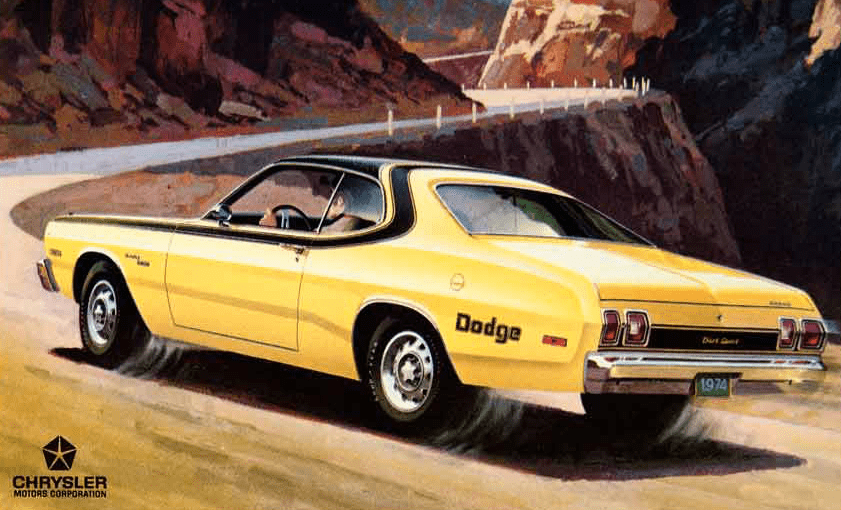
Sure, the art is a little adolescent, but that’s not what makes this ad so strange. The muscle-car era had definitively come to a conclusion by the end of 1972, and the car-in-motion drawing seen here was just a desperate attempt by Dodge to keep the nation’s performance-car energy flowing. Strangely, that’s not really what the text of this ad suggests. In fact, I have no actual idea what the point of this ad—or this car—is.
For those not in the know, the muscle-car era came to a close as a result of a tragic triumvirate of events: the introduction of low-lead gas (resulting in lower fuel-octane ratings), rising fuel prices, and massive increases in sporty-car insurance premium rates.
That said, this ad seems to suggest that there is more to performance—than performance? I’ve read the copy dozens of times, and remain baffled by what is being proposed here.
“If you understand what happens when you couple a 2.94 rear end to a wide-ratio 4-speed…you’re the one were after.”
Well, I’m not the one Dodge is after.
Read the text of the ad, I have a few things to complain about:

- First, a 2.94 (2.94:1) axle ratio was pretty mild for the era. The ratio represents the gear reduction that takes place in a vehicle’s differential. In this case, the number means than for every 2.94 turns of the drive shaft—which inputs into the differential—the wheels will turn one time. Whatever point this ads is trying to make, a 2.94 ratio is a little high numerically for good fuel economy or relaxed highway driving, and a little low numerically for performance driving.
- Further, while the “wide-ratio” 4-speed transmission might help with both fuel economy and highway comfort, it’s not going to contribute to making the ride experience entertaining in any way.
- Okay, the ad literally associates the 318-cubic-inch V8 (an engine fabled for its reliability) with your freaking grandmother. Why the hell? Later in the decade, the 318 would be all the V8 you could have in a Chrysler product, but in 1973, the maker’s fabled 440-inch monster V8 could still be optioned in some cars, so Dodge isn’t serving up much in the way of performance here.
1979 Ford Pinto: Favorite Car Ads

The “Rallye” suspension was probably a nice ad, and on roads such as the one depicted, could be of genuine performance value. That said, the addition of power steering to the mix would have sucked all the road feel out of the equation. Though nice in parking lots, early Seventies American power steering simply dulled responsiveness.
So, what is it Dodge is selling here?
My best guess is that Dodge was testing the waters on something along the line of a touring car, the likes of which were best built at the time by Audi and BMW. But in 1973, Dodge could never admit such a thing, and covering the car with graphic stickers—in muscle-car style—rather confused the message additionally.
The Dart Sport Rallye must have been pretty rare, because it didn’t serve up much a traditional Dodge, or muscle-car shopper, might have wanted at the time. That said, it probably made for a fine highway/rural-drive commuter vehicle, serving up reasonable power and good—for 1973—fuel economy.
But, that’s not what the ad says. So, Dodge, I decry your strangely oblique ad copy and your even stranger car. Had you—and your marketing folks—not been afraid to position this car as something other than what it was, you might have started an interesting trend. Maybe.
Listen to the Car Stuff Podcast
1973 Dodge Dart Sport Rallye Gallery
Click below for enlarged images







